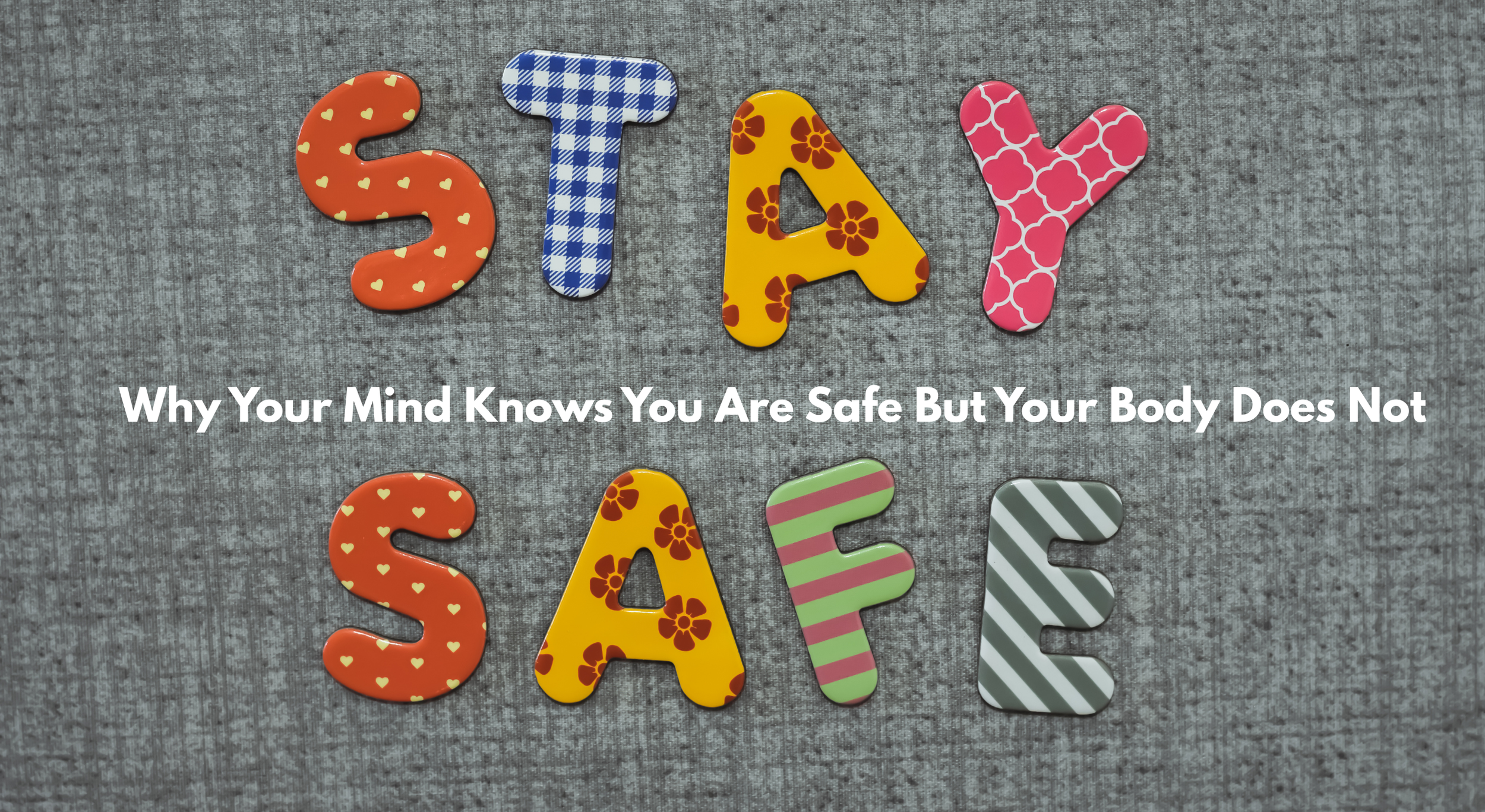Why Your Mind Knows You Are Safe But Your Body Does Not
Ever felt calm in your thoughts but anxious in your body? Learn why your nervous system does not always believe your logic, and how hypnotherapy helps retrain the body to truly feel safe.
When Logic and the Body Do Not Match
You can tell yourself you are safe. You can list the reasons.Yet your heart still races, your chest tightens, and your stomach twists. This mismatch is not weakness. It is a trained survival pattern that has become overactive. Many clients say, “I know I should be fine, but I still feel it.” That is the body’s alarm system doing its job too often. Your logical mind knows there is no danger, but your body has not caught up yet.
👉 For more on calming anxiety, read How To Make Anxiety Go Away.
The Two Systems at Play. Thinking Mind and Survival Brain
Your thinking mind uses language, reasoning, and reflection. Your survival brain uses patterns, sensations, and memory. When the survival system fires first, the body reacts before thoughts can catch up. That is why anxiety feels physical - heart racing, shallow breath, tight muscles. Think of your mind like a pool of water. When the surface is disturbed, the reflection becomes distorted. When the water settles, reality becomes clearer. Decisions and insights are more accurate when they come from calm reflection rather than emotional turbulence.
Why It Keeps Happening Even When You Understand It
Understanding anxiety does not automatically stop it. Your body learns through repetition, not logic. Over time, your nervous system forms habits of overreaction. Imagine a car alarm that has become too sensitive. Instead of sounding only when there is a real break-in, it now goes off with every gust of wind. Panic attacks work in a similar way. Your body’s alarm system needs adjusting, not dismantling. Hypnotherapy for panic attacks helps reset that system so it only activates when it truly needs to.
How Hypnotherapy Helps the Body Feel Safe Again
Hypnotherapy communicates directly with the part of the mind that controls automatic responses. In session, your body enters a calm but alert state, allowing you to learn new patterns safely.
We often use hypnosis to:
Reassure the body that calm is safe
Rehearse new responses under mild stress
Separate old triggers from danger signals
Build confidence through repetition
Over time, the body begins to align with the logic of the mind. You no longer just think you are safe. You feel it.
A Simple Nervous System Reset You Can Use Today
Think of anxiety like a row of dominoes. When they are all lined up and one falls, the rest follow. The first domino might be shallow breathing, tense muscles, or a racing thought. Remove just one and the rest stop falling.
Here are four quick resets you can use:
Encourage saliva production. Chew gum or imagine your favourite food. This tells your brain you are safe enough to digest.
Question all-or-nothing thoughts. When your mind catastrophises, remind yourself, “That is anxiety talking. I will think again when I am calm.”
Relax the body deliberately. Roll your shoulders, unclench your jaw, soften your stomach.
Breathe slowly and fully. Use the 7:11 method — in for seven, out for eleven — breathing from your diaphragm. The long exhale activates your parasympathetic system and tells the body it can stand down.
Research shows breathing techniques like this directly influence your physiology. Learn more from Harvard Health: Breathing for Calm.
From Alarm to Balance
The car alarm, the calm pool, and the dominoes all show the same principle. When the nervous system is tuned too high, it overreacts. The aim is not to remove anxiety completely but to recalibrate it. Calm becomes your new baseline, not the exception.
A Short Case Example
One client experienced daily chest tightness on the bus. She knew it was safe but her body disagreed. We discovered the sound of the closing doors triggered the reaction. In hypnosis she rehearsed hearing that sound while remaining relaxed. After a week the tension reduced by half. By week three, she could ride calmly most days. The body had relearned safety.
Helpful Reframes That Support Change
Calm is a skill that grows with practice.
Your body is not the enemy. It just needs new examples of safety.
You do not need zero anxiety. You need the ability to steer it.
Frequently Asked Questions
Do I lose control in hypnosis?
No. You remain aware and in charge. Hypnosis is a cooperative learning state where you can retrain automatic responses safely.
How many sessions will I need?
Most clients notice meaningful change within a few sessions. It depends on your history, current stress levels, and practice between sessions.
Can I combine coaching with hypnotherapy?
Yes. Strategic coaching helps you act on the calm you build and maintain momentum.
Help Your Body Catch Up To Your Mind
Start with a free twenty-minute discovery call — online or in Waverley
Book Your Free Call


